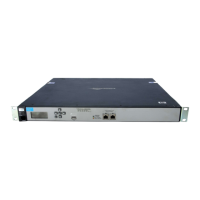Network configuration
Bandwidth control
3-22
Internet port data rate limits
These settings enable you to limit the total incoming or outgoing data rate on the Internet
port. If traffic exceeds the rate you set for short bursts, it is buffered. Long overages will
result in data being dropped.
To utilize the full available bandwidth, the Maximum transmit rate and Maximum receive
rate should be set to match the incoming and outgoing data rates supported by the
connection established on the Internet port.
Bandwidth levels
The controller provides four levels of traffic priority that you can use to manage traffic flow:
Very High, High, Normal, and Low. The settings for each level are customizable, allowing
performance to be tailored to meet a wide variety of scenarios.
Assigning traffic to a bandwidth level
Traffic can be assigned to a specific bandwidth level for each VSC and for each user. For
bandwidth control to be operational, you must first enable the Internet port data rate
limits option. Once this is done, you can assign traffic to bandwidth levels as follows:
In a VSC, select the default level for all user traffic in the Bandwidth control box. This
level applies to users who do not have a specific assignment in their user account.
In a user’s account profile, set the Bandwidth level in the Bandwidth limits box.
Or if you are using a RADIUS server to validate user logins, set the bandwidth level using
a Colubris AV-Pair value. See Bandwidth level on page 15-68.
To control the default bandwidth level for all users, see Default user bandwidth level on
page 15-51.

